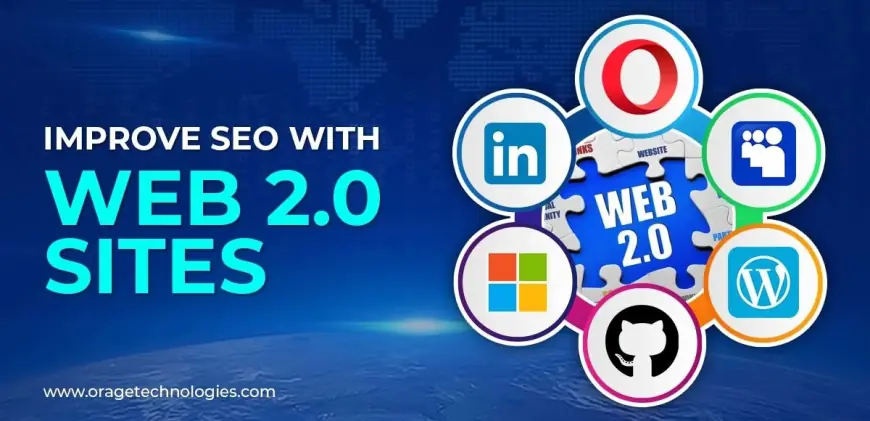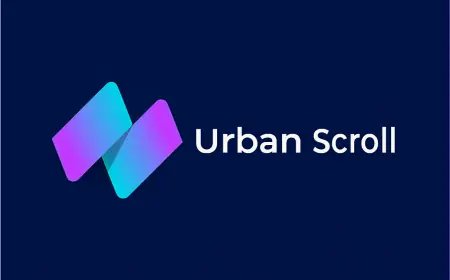Optimizing Anchor Text for SEO on Web 2.0 Sites
Whether you are creating links by hand or developing value-oriented blogs on high-authority Web 2.0 Sites, how you approach anchor text can either save or ruin your SEO campaign. In this tutorial, we'll take you through best practices, mistakes to avoid, and practical steps designed for 2025 and beyond.

In the constantly changing world of search engine optimization, every little thing matters—and anchor text is no different. When properly done, anchor text enhances your backlink quality, increases keyword positions, and makes your site more user-friendly. But when abused, it will bring you penalties or wasted chances. So, how do you optimize anchor text on Web 2.0 Sites without overstepping boundaries?
Whether you are creating links by hand or developing value-oriented blogs on high-authority Web 2.0 Sites, how you approach anchor text can either save or ruin your SEO campaign. In this tutorial, we'll take you through best practices, mistakes to avoid, and practical steps designed for 2025 and beyond.
What Is Anchor Text and Why Does It Matter for SEO?
Anchor text is the visible text in a link. It informs users and search engines about what the linked page is all about. For instance, in the term "learn more about SEO techniques," "SEO techniques" is the anchor text.
For Web 2.0 Sites, anchor text serves a twofold purpose:
-
It facilitates users to navigate content easily.
-
It informs search engines about what the topic of the linked page is.
Anchor text is a ranking criterion used by search engines. The more relevant and consistent your anchor text, the better your linked pages will rank for matching keywords.
Why Web 2.0 Sites Are Best Suitable for Anchor Text Optimization
Web 2.0 Sites like WordPress.com, Medium, Tumblr, and Blogger allow users to create free blogs and embed backlinks naturally within the content. Since these platforms typically have high domain authority, backlinks from them carry significant SEO weight, provided the anchor text is used strategically.
Here's why they’re great:
-
You control the content and anchor text.
-
You can diversify anchor text across multiple platforms.
-
You can interlink Web 2.0 blogs to build link equity.
With Web 2.0 Sites, you're not relying on third-party publishers, so you have greater control over where and how your links show up.
What Are the Different Types of Anchor Text?
Optimizing effectively requires that you learn the different types of anchor text and when to implement them.
1. Exact Match
The anchor text is literally the keyword you wish to rank for.
Example: digital marketing courses
2. Partial Match
Contains a variation of the target keyword.
Example: best digital marketing training
3. Branded
Refers to your brand name as the anchor.
Example: Learn with SkillGuru
4. Naked URL
Shows the raw URL.
Example: www.skillguru.com
5. Generic
Employs non-specific terms.
Example: click here, read more
6. LSI or Semantic Keywords
Employs related or context-specific terms.
Example: online learning platforms
On Web 2.0 Sites, employing a mix of these facilitates a natural link profile, vital in avoiding over-optimization.
How Do You Optimize Anchor Text on Web 2.0 Sites?
Now that you understand what types there are, let's get into using anchor text properly on Web 2.0 Sites.
1. Vary Your Anchor Text
Don't repeat the same anchor over blogs. Instead, switch between exact match, branded, and LSI terms. This maintains your backlink profile natural and algorithm-safe.
2. Make It Contextual
Ensure that the anchor naturally belongs in the sentence. Jamming it in haphazardly for SEO purposes will lose user trust and elicit penalties.
3. Link to Relevant Pages
Link only to content relevant to the anchor. Linking to an off-topic page will adversely affect both SEO and user experience.
4. Limit Each Page's Outbound Links
Don't put 10+ outbound links in one Web 2.0 blog post. Use only 2–3 quality backlinks with properly optimized anchor text.
5. Leverage Anchor Text for Topic Clustering
If you have multiple Web 2.0 Sites, utilize anchor text to link between them. This builds authority on your content network.
What Are Typical Anchor Text Mistakes?
Even the most seasoned marketers make anchor text mistakes at times. These are blunders you want to steer clear of:
❌ Excessive Use of Exact Match Anchors
Search engines consider this an indication of manipulation. Use exact match anchor text below 20% of your overall links.
❌ Linking to Non-Relevant Pages
Deceptive anchor text misleads users and dilutes page authority.
❌ Forgetting About User Experience
Anchor text must direct readers. Don't compromise readability for the use of keywords.
❌ Employing Broken or Low-Quality Links
Always verify the URL you're linking to. A broken link indicates poor quality and halts crawling.
How Can You Monitor Anchor Text Performance?
You can't fix what you don't measure. Leverage tools such as:
-
Ahrefs: Monitor anchor text distribution and referring domains.
-
SEMrush: Audit backlinks and detect toxic ones.
-
Google Search Console: Monitor indexed links and pages with the most clicks.
-
Screaming Frog: Examine anchor text usage on several pages.
This assists you in making adjustments to your strategy and preventing anchor text abuse.
How Many Anchor Text Variations Should You Use on Web 2.0 Sites?
There is no magic figure, but a safe ratio usually given by SEO experts is:
-
30–40% Branded
-
20–30% Partial Match
-
10–15% Exact Match
-
10–15% LSI Keywords
-
10% Generic/Naked URL
This mix ensures your profile appears natural to search engines while establishing relevance for your keyphrases.
FAQ: Anchor Text & SEO on Web 2.0 Sites
Q1: Is exact match anchor text dangerous in 2025?
Not in itself. It is dangerous when overused or spammed. Use it sparingly in conjunction with other anchor text.
Q2: May I use the same anchor text on several Web 2.0 blogs?
Yes, but don't overdo it. Diversity is the key to algorithm safety.
Q3: How long should I make the anchor text?
Brevity is best—usually 2 to 5 words. Steer clear of long, keyword-laden phrases.
Q4: Do I nofollow Web 2.0 Site links?
All but a few enable dofollow links, which are more beneficial for SEO. But a couple of nofollow links in your combination will diversify your profile.
Q5: Can I automate anchor text generation?
AI applications can help, but they should be manually reviewed. Getting contextual accuracy right is more important than speed.
Final Thoughts
Anchor text optimization is an essential SEO talent, particularly when dealing with Web 2.0 Sites. These sites allow you to have a directed environment to write specific, contextual anchors that enhance your authority and search rankings.
But the secret is balance. Steer clear of shortcuts, vary your anchors, and never forget user experience. In 2025, intelligent link-building is not merely about quantity—it's about intent, form, and relevance.
Use the flexibility of Web 2.0 Sites to your advantage, and you’ll unlock SEO growth that’s both scalable and sustainable.
What's Your Reaction?
 Like
0
Like
0
 Dislike
0
Dislike
0
 Love
0
Love
0
 Funny
0
Funny
0
 Angry
0
Angry
0
 Sad
0
Sad
0
 Wow
0
Wow
0















































